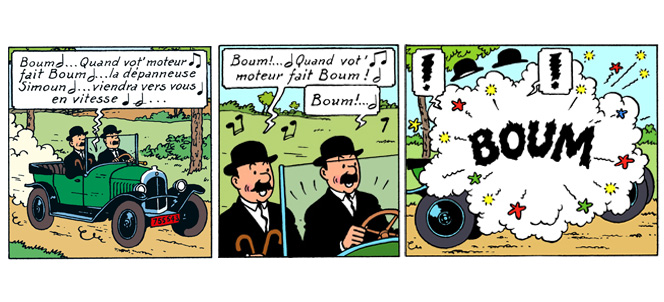Fr : version française / En: english version
mheu, Historical Museum of the Urban Environment
The Adventures of Tintin: Land of Black Gold (excerpt)
Hergé

1951
© Hergé / Moulinsart
View this work in the Fire exhibition
The artist
Georges Prosper Remi, better known under his pseudonym Hergé, was born in Brussels in 1907 to a Walloon father and Flemish mother in a conservative, Catholic family. He showed a keen interest in drawing from a very young age, and later in scouting, publishing his first drawings in scouting magazines in the 1920s. Once his secondary education was complete, he started working for the conservative daily Le vingtième siècle, then did his military service. On his return, he was put in charge of Petit vingtième, a supplement for young people which he illustrated abundantly, alongside Catholic and scouting publications. In 1928 he recycled a character called Totor, a scout he renamed Tintin who became a reporter, giving him a fox terrier as a companion named Snowy. His first major investigation, Tintin in the Land of the Soviets, aimed to denounce the communist regime. Printed in the Petit vingtième, it was a huge publishing success. From that point on, the readership for the adventures of Tintin and Milou, whose storylines tracked current events such as colonialism, prohibition in America, Japan's invasion of China and Che Guevara and Latin American dictatorships in Tintin and the Picaros, grew steadily. The books were translated into a hundred languages and sold more than 200 million copies!
Hergé was among the first to import balloons, or comic book speech bubbles, which were already common in the United States. As he worked on his first books, he refined his style and paid careful attention to documentation. Most important, though, with the help of his assistant Jacobs, he pushed "clear lines"—flat colors, black-outlined drawings and the absence of light effects, to improve the narration's readability—as far as it could go. He died of leukemia in 1983, leaving "Tintin and the Alph'art," about contemporary art sects, unfinished.